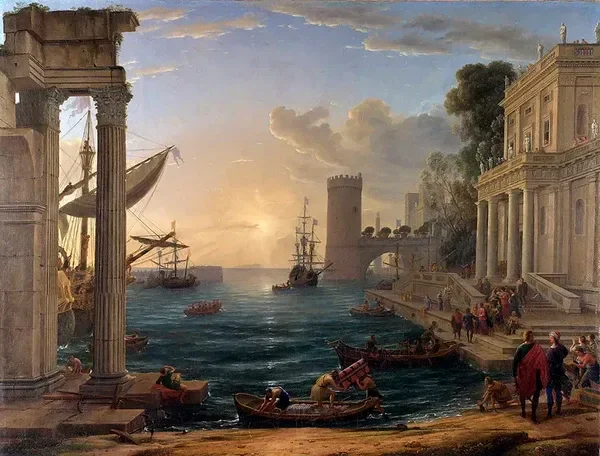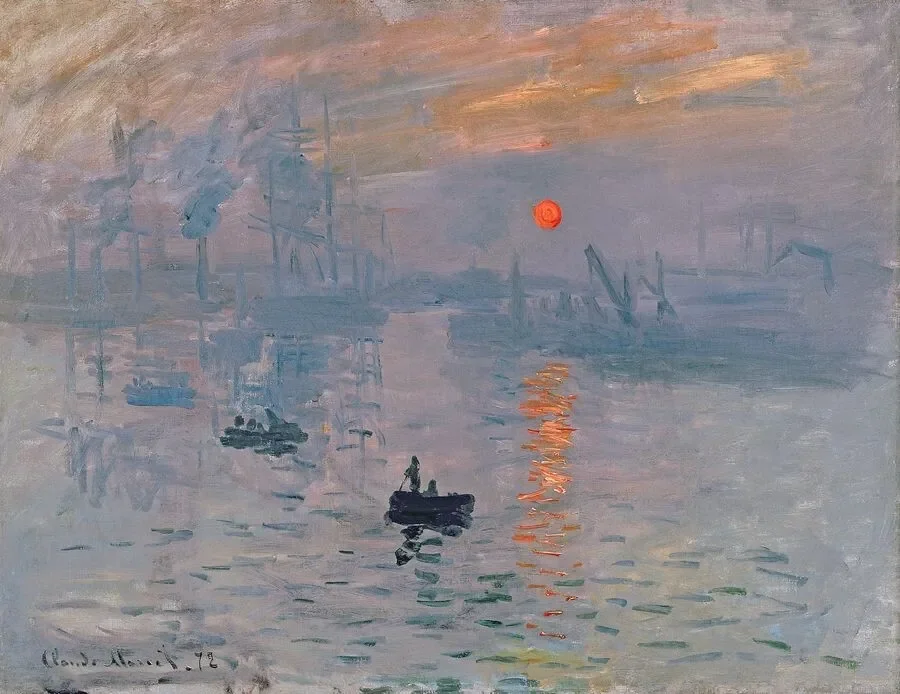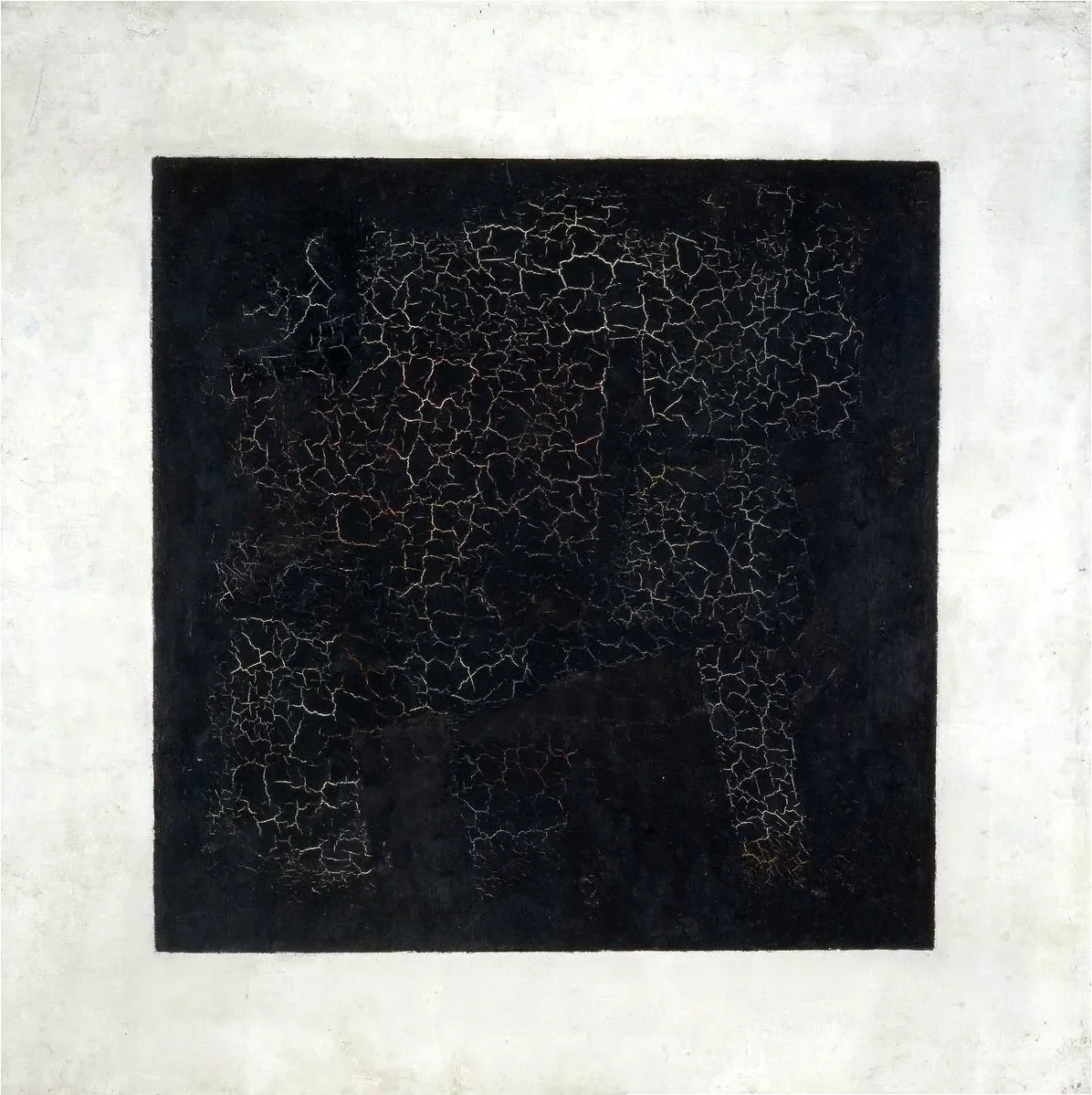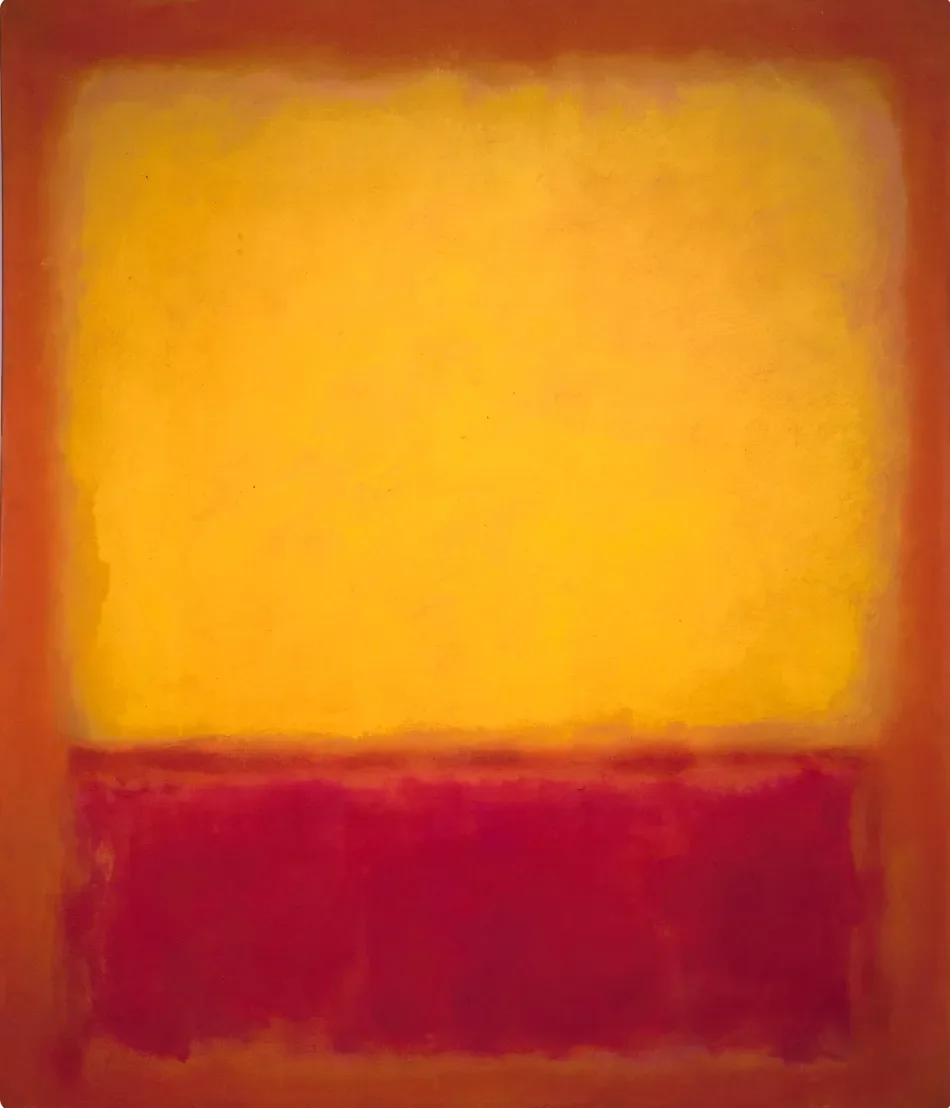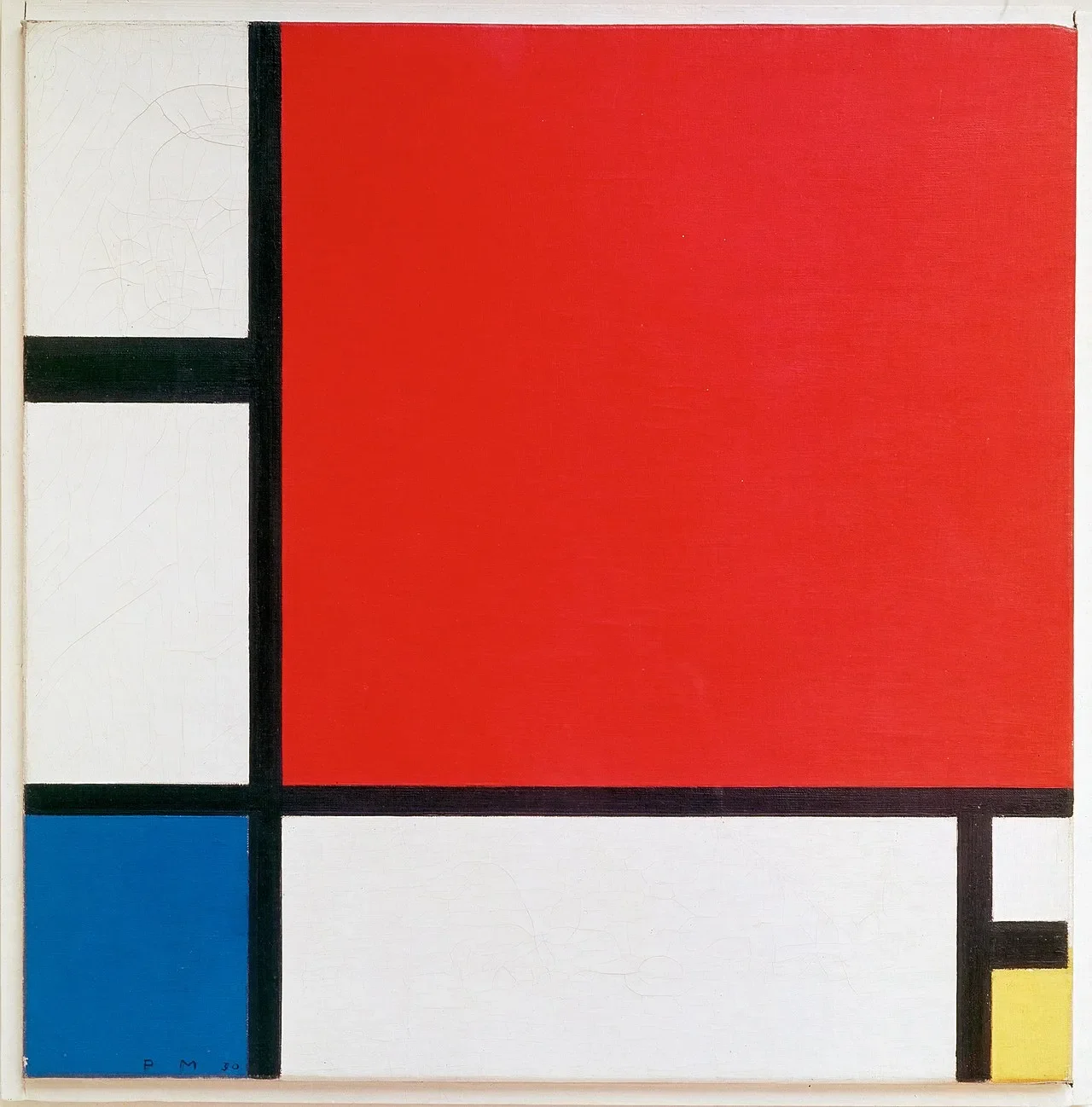Thoughts on The Power of Simplicity in Abstract Art
Abstract art is often seen as a visual playground. It’s a space where rules are loosened, and artist creativity can run wild in any direction imaginable. While abstract art gives artists a certain freedom from the confines of realism, not every brushstroke or splash of paint always leads to a masterpiece. Sometimes, less is really more. For some reason, I continually struggle with this idea that simplicity is really “ok” and, honestly, sometimes better. In a genre already focused on emotion and essence over literal representation, simplicity is a way to cut through the noise and static, allowing the artwork to hit its mark with elegance and impact.
In the creation of “art”, simplicity doesn’t mean taking shortcuts or settling for a watered-down version of a big idea. But, the simplest creations can actually have the largest impact. To achieve this, the focus must initially be on the essentials — many times by continually editing, revising, and being brave. In abstract art, simplicity translates into using fewer shapes, fewer colors, or fewer details, and this can be a challenge that’s even more difficult than adding more. Sometimes, even the negative space can be more important than the actual focal point. Simplicity isn’t about laziness, and it’s certainly not about lack of skill. It’s about sharpening the message, leaving just enough for viewers to latch onto something real, even if it’s just in their own minds.
By embracing simplicity in our work, we can create pieces that let viewers absorb and engage with what’s on the canvas without initially overwhelming them. Simplicity leaves room for interpretation. But a simpler piece can also bring clarity. This clarity can give it resonance.
A Quick Case Study
Now, I am admitting that this may only be my personal opinion. That’s the beauty of creating and appreciating art anyway. But, imagine walking into a room with the two paintings below. Which one would likely catch your eye and draw you in from across the room? Which one invokes a strong emotional feeling? Which one likely would allow you to really see the hand of the artist who created it and immerse yourself in the subtle details? Which one leaves room for exploration and individual interpretation?
Seaport with the Embarkation of the Queen of Sheba is an oil painting by Claude Lorrain (born Claude Gellée, traditionally known as Claude), in the National Gallery, London, signed and dated 1648.
Claude Monet's "Impression, Sunrise" (1872) is the painting that named the Impressionist movement, as a critic's satirical review of the work in 1874 coined the term.
Simplicity in Abstract Art
Abstract art is meant to evoke something—a feeling, an idea, a gut reaction. With fewer distractions, the emotional impact can hit harder and faster. When viewers aren’t bombarded with too many elements, they’re more likely to feel a response instead of analyzing every inch of the canvas. In the paintings above, I bet the simple, orange setting sun catches your eye before anything in the complex, detailed painting above it.
While some viewers revel in dissecting the details of complex pieces and appreciating the time and skill required to produce such a work, many people appreciate art that leaves room for interpretation and exploration. Simplicity allows viewers to engage with the art in a way that feels approachable to them. When there aren’t too many competing shapes, colors, or forms, people feel free to bring their own meaning to the work. This can make abstract art more inclusive.
By paring things down, artists direct the viewer’s attention to what truly matters. Whether it’s a color, shape, or texture, simple elements get the spotlight they deserve. This makes every stroke more intentional, every form more impactful. For me, simplicity provides a refreshing meditative experience, allowing me to pause, focus, and even dream, if only for a moment.
Similar to how complex, detailed art can have layers to enjoy, simple art can have another dimension to it when you get up close. This is the beauty of real, physical art and hopefully why it will never be replaced by digital works. Brushstrokes, subtle texture variations, or layers of color suddenly become visible, adding depth, richness, and meaning to the piece. This intimacy invites viewers to look beyond the larger shapes and colors to discover tiny nuances and marks that convey the artist’s human hand, energy, and process. These details transform a seemingly straightforward composition into a multifaceted experience, offering a layered experience where initial simplicity meets complexity. It’s a bit like discovering hidden facets in something you thought you already understood, bringing new appreciation and depth with every closer look.
Meaning in Abstract Art
Sometimes a single shape or color can say more than a canvas filled with intricate designs. Take Kazimir Malevich’s “Black Square”—it’s literally a black square on a white background, yet it’s one of the most talked-about abstract works in art history. It’s not the complexity of form but the boldness of reduction that gives it significance. This kind of minimalism makes simple forms feel symbolic, giving them weight beyond what’s visible.
Black Square (Russian: Чёрный квадрат) is a 1915 oil on linen canvas painting by the Russian avant-garde artist and theorist Kazimir Malevich.[1][2] There are four painted versions, the first of which was completed in 1915 and described by the artist as his breakthrough work and the inception of his Suprematist art movement (1915–1919).
Simplicity can bring balance to a piece. With fewer elements, there’s less risk of visual clutter, making it easier to achieve harmony across the canvas. This balance can be soothing, and it’s often why simpler artworks are pleasing to the eye. Balance in abstract art doesn’t necessarily mean symmetry, but it does mean that each part of the artwork feels purposeful and in harmony with the whole.
There’s something about simplicity that invites me to slow down. In abstract art, a minimalist approach can be grounding, encouraging viewers to engage with the piece in a calm, open way. It can actually be therapeutic. Simple artwork asks for nothing but attention and interpretation, fostering a sense of mindfulness that encourages you to pause, reflect, and simply enjoy.
Some of the most iconic abstract artworks stand out because of their simplicity. Take, for example, the color fields of Mark Rothko. His works often consist of just two or three blocks of color, yet they’re known to evoke strong emotional responses. Rothko’s pieces aren’t complex in their construction, but their simplicity allows the color to become the message, letting viewers feel the weight of each shade.
Mark Rothko — Yellow over Purple (1956)
Then there’s Piet Mondrian’s “Composition with Red, Blue, and Yellow.” It’s a grid of black lines with squares of primary colors, but it’s been celebrated worldwide. Why? Because its simplicity delivers a clear and balanced experience. Each color and line has a purpose, creating a composition that’s both orderly and striking.
Composition with Red, Blue and Yellow is an oil on canvas painting by Piet Mondrian, from 1930. "Mondrian's Composition with Red, Blue, and Yellow demonstrates his commitment to relational opposites, asymmetry, and pure planes of color. Mondrian composed this painting as a harmony of contrasts that signifies both balance and the tension of dynamic forces."
These artists didn’t simplify because they couldn’t do more—they simplified because that’s what the work needed. They understood that simplicity can be a statement in itself.
Seeking Simplicity
It may sound easy to “keep things simple,” but simplicity requires restraint and discipline. When creating abstract art, artists have to resist the urge to always add more. As I mentioned, I constantly struggle with this urge. Adding more is easy. Removing what’s on the canvas or restraining yourself is difficult. Striking the balance between minimal and meaningful is an art form in itself. Too little, and the work may feel empty; too much, and the essence gets lost.
While simplicity is powerful, it doesn’t mean removing all depth. An artwork that’s too pared down can risk looking empty or unengaging. There’s a fine line between simplicity and oversimplification. Good abstract art strikes a balance, offering just enough to keep viewers intrigued without overwhelming them.
Artists have to know when to stop, and that can be the hardest part. When working with fewer elements, every decision counts. Developing restraint is essential in abstract art—overworking a piece can dilute its message, while stopping too soon can make it feel incomplete.
Achieving Simplicity
When it comes to creating simplicity in abstract art, it’s less about following strict rules and more about making every choice intentional and meaningful. A good place to start is with a limited color palette. Using only one or two colors can open up a world of creative possibilities, encouraging you to focus on how those colors interact and contrast rather than relying on a range of hues to convey your message. This constraint can be surprisingly liberating, pushing you to think more deeply about the impact of each color choice.
Another effective way to embrace simplicity is through the thoughtful use of negative space. Blank areas on the canvas aren’t empty or wasted; instead, they serve as a kind of breathing room that balances the more active parts of the artwork. Negative space draws the eye to the main elements, creating a natural contrast that adds depth without clutter. But this is where, when you look up close, small details can add depth and another layer of enjoyment and meaning.
Focusing on key shapes and lines can also give your work a strong, recognizable structure. Limiting yourself to one or two main shapes can enhance the visual cohesion of your piece, giving it a clear entry point that allows the viewer to engage and then go deeper.
Chasing Resonance
In art, music, literature, and even science, “resonance” refers to the idea that something strikes a chord or connects deeply, often evoking a powerful, almost instinctual reaction. When we say an artwork or a piece of music “resonates,” we mean that it impacts us on an emotional, intellectual, or even physical level. It goes beyond surface appreciation of the work and stirs something within, making the experience more memorable and meaningful.
In a more technical sense, resonance in physics describes a phenomenon where an object vibrates at the same frequency as an external force, amplifying its sound or motion. Similarly, in abstract terms, resonance in art amplifies certain emotions or ideas within the viewer, creating a sense of connection that feels amplified, often lingering in their memory or thoughts. Without realizing it, I know that this is what I’m chasing in my own art.
Resonance is why a minimalist painting with simple shapes can still feel powerful or why a certain line of a song sticks with us. The work communicates something essential and impactful, resonating with our own thoughts, experiences, or emotions. It’s about alignment. It’s when the message or feeling of the piece and the perception of the audience come together in harmony.
Simplicity in abstract art isn’t about stripping away meaning or content; it’s really about amplifying what matters most. By focusing on core elements and avoiding unnecessary clutter, we can create pieces that resonate on a deep level, inviting viewers to connect and interpret in their own way. It takes skill and restraint, but simplicity can make abstract art more accessible, more impactful, and ultimately, more memorable.
It seems like the world is overflowing with visuals and overwhelming noise at times. A simple piece of abstract art can be a refreshing change. Sometimes a single shape or color is all it takes to say something profound.
